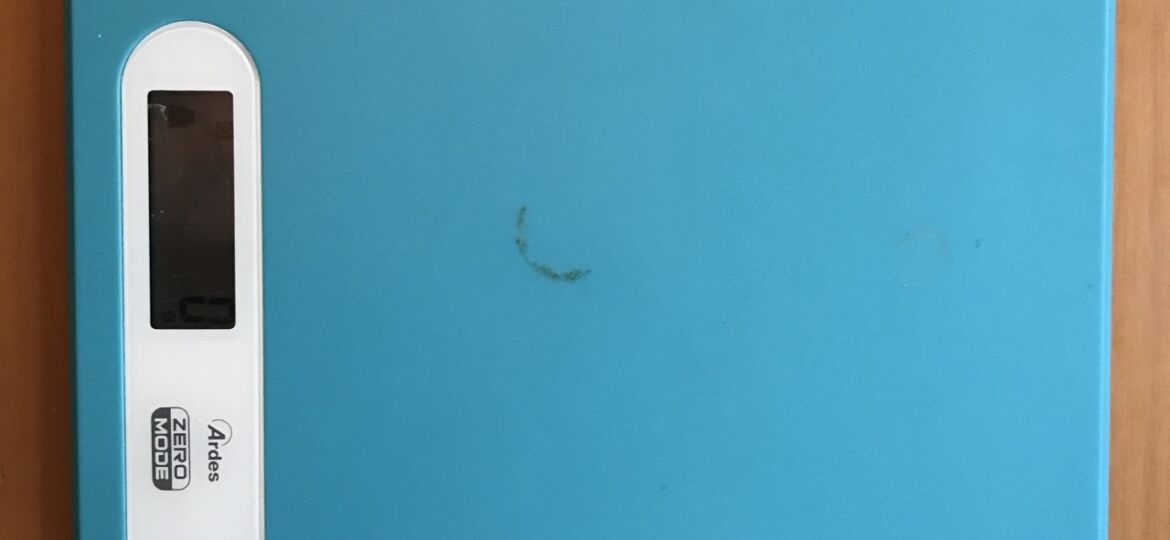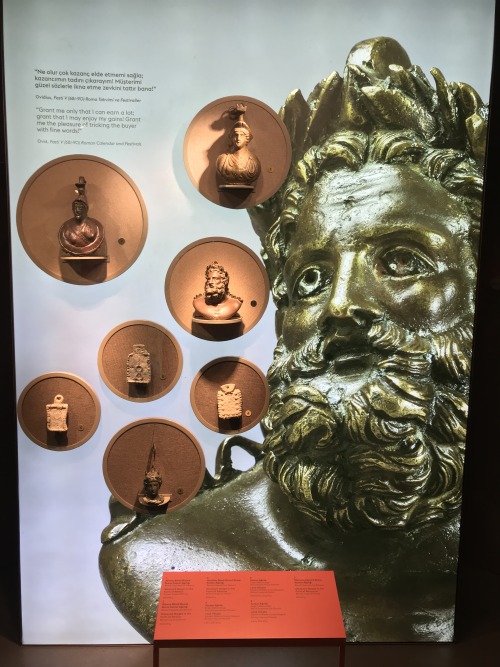
My Ph.D. project on Byzantine icons in relief is fundamentally object-based and requires a close inspection of artifacts in a variety of materials and sizes. It attempts to reconstruct how religious reliefs interacted with the human body in their historical context. When I study an object out of the exhibition case, I search for hints about how it was made, handled, and displayed.
I look for marks left by the artist’s tools, traces of color and gilding, cracks and chipping caused by the removal or renewal of original frames, and other damage caused by repeated touching. The amount of information I can evince from a close inspection of a specific work is unpredictable. Sometimes the relief is “eloquent” about its past life, other times it is “reserved,” and I can add little to what is already obvious. Nevertheless, there are two pieces of information that I can always extrapolate from the object: its weight and size. The artifact’s measurements are indeed the very first data of which I take note. My approach to the object begins with the simple, and by now automatic, action of measuring with the aid of a soft measuring tape and a small electronic scale (Fig. 1). Only after entering these numbers in my database do I feel ready to lay my eyes and gloved hands on the object for close inspection.
Until recently, I have never reflected upon this routine nor on the significance of these numbers for my research. There is surely a comforting and practical aspect to it. In contrast, other evidence requires more thinking and scrutiny; measurements are objective facts for which little interpretation is involved. 10.7 cm is 10.7 cm, full stop. Moreover, knowing these numbers makes me feel a step closer to understanding the work at which I am looking and closer to knowing its hidden secrets. Finally, measurements allow for easy comparisons across the corpus: Object A is as wide and thick as object B, but C’s weight is greater than D’s.
However, a recent visit to the Pera Museum’s Anatolian Weights and Measures made me think more critically about this aspect of my work.

Fig. 2
On March 2, 2023, a group of ANAMED fellows, joined by a few other researchers from nearby institutes, gathered at the doors of the Pera Museum to be welcomed by Yavuz Selim Güler, collection supervisor of the Anatolian Weights and Measures gallery of the Museum. An old friend of mine, Yavuz generously agreed to lead us through the Weights and Measures exhibition and answer our many questions (Fig. 2).[1] The collection is part of the Suna and İnan Kıraç Foundation and comprises artifacts from a wide chronological spectrum from the Assyrian to the late Ottoman periods. Its focus is on the history of metrology, a still-understudied aspect of human culture. The display of the recently renovated gallery is modern and dynamic, inviting visitors to circumambulate the space and gaze at the pleasantly arranged objects.[2] Warm red and purple signal to the visitor the transition from one thematic session to the next, while interactive screens, photographs, and images complement the display cases and provide further context to imagine the exhibited items in their actual use. While I leave to curious readers the pleasure of discovering the specifics of the gallery with an in-person visit, in the following I will share a few thoughts triggered by the tour and Yavuz’s explanations.

Fig. 3
One aspect that struck me while wandering around the first half of the exhibition is the range in the measuring tools’ iconographies. I expected weights to come in geometrical forms, but instead, I found weights could assume a variety of shapes. Consider, for instance, the small Assyrian weights carved or molded in the form of ducks, frogs, and bovine heads (Fig. 3) or the Hellenistic and Byzantine examples in the shape of mythological and imperial figures, such as the finely worked bronze bust of Herakles (Fig. 4). Curious, also, are the Roman weights in the shape of a giant astragalus, a bone found in the heel of many mammals. In their own ways, these different figures seem to charge the weights with connotations that surpass their practical purpose. The zoomorphic Assyrian weights, for instance, had also a prophylactic function, for they could be worn on the body as amulets or function as seals. Similarly, the astragalus has been traditionally associated with good luck and the occult, while mythic and imperial figures are evocative of superhuman powers. The exhibition further suggests a transcendental connotation of weight by bringing to the viewer’s attention the Egyptian and Byzantine belief in the significance of weighing in the afterlife (Fig. 5). Whereas in the Egyptian tradition, the goddess Maat would weigh the deceased’s heart against the Feather of Truth to decide the destiny of the dead person, in the Byzantine belief system, the soul would be weighed to determine whether the deceased was worthy of Heaven.

Fig. 4

Fig. 5
The variety of the weights’ iconographies is paired with an equally diverse range of materials. Throughout history, weights have been crafted in marble and semi-precious stones, such as hematite and agate, in bronze alloys and brass, lead, and glass. Besides the question of material availability and technological possibilities, two principles seem to have informed a material choice, namely durability and replaceability. Bronze, for instance, can endure many manipulations without significant alterations in mass, in contrast to softer materials that would be quickly worn down and change the weight’s heaviness. Glass, on the contrary, is relatively fragile but easy to replace if it becomes broken or chipped. These considerations bring to light one aspect of measures of which—in the era of the standard metric system and of synthetic, “indestructible” materials—we are often forgetful: their inclination to impreciseness. The matter that constitutes the tools that materialize a specific weight or length shrinks, erodes, and wears down over time, challenging the absolute value it supposedly represents. The history of metrology is the history of a battle between the ideal and the material.[3]
The exhibition comments on this point with the last exhibit of the weights section, Le Grand K2 by Turkish artist Avşar Gürpınar. Inspired by the Pera Museum’s Weights and Measures collection, Le Grand K2 is a barite stone carved down to the weight of one kilogram (Fig. 6). As the explicatory panel clarifies, with this piece the artist wished to criticize the International Bureau of Weights and Measures’ decision in 2018 to institute a mathematical formula as the International Prototype of the Kilogram (IPK). The formula replaced a physical cylinder that had served as the standard for the making of weights across the world since 1889. Over time, the original IPK had lost 50 micrograms—the equivalent weight of a grain of salt. The formula that replaced the physical object is the ultimate attempt of scientific measure to triumph over matter by divorcing the ideal measurement from the inevitable decay of the material world. Avşar Gürpınar’s artwork, however, invites the viewers to reflect upon the adequacy of an absolute value to weigh “our flexible and variable world, imperfect in every way, full of faults and margins of error,” a world where “every solid thing is evaporating.”[4]

Fig. 6
Returning to my measuring routine, the visit to the Pera Museum reminded me that measures are abstract and, to some degree, unreliable. More importantly, however, it made me reflect upon their meaning for me and my research. Do these abstract values truly serve my purpose, my attempt to envision the interaction between artworks and human bodies? Or should I instead, following Avşar Gürpınar’s exhortation, think of measures in terms of something more material that better reflects the world from, in, and for which the objects were made? I could, for instance, say that X is the size of the palm of an adult hand and that Y is as heavy as a shelled walnut. Sure, hands and shelled nuts come in different sizes, but the approximation may be more evocative than a precise digit, for it brings the artifact closer to us. The object on the scale or next to the measuring tape yields an absolute number, but it is only when I hold it in my hands that I can grasp what its weight and size meant for a human body.
—————————————————————————————————————————————————–
[1] Yavuz and I first met at ANAMED’s Cappadocia in Context Summer Program in 2019.
[2] The gallery reopened in November 2021.
[3] My thinking on this and other themes presented in this short essay was inspired by Emanuele Lugli’s publication The Making of Measure and the Promise of Sameness (Chicago: University of Chicago Press, 2019).
[4] Quote from the descriptive panel.

